40 of the Best Colorado Beers From Paste Blind Tastings
Photos by Paste Drink Lists Best colorado beers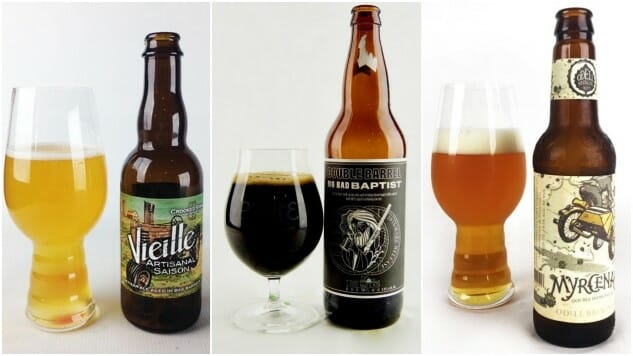
Since Paste began hosting large-scale blind tastings of craft beer styles in 2015, it’s safe to say we have tasted a lot of beers. The sheer numbers are mind-boggling even to us, reaching beyond the hundreds and into the thousands of separate brews. All of the data from these tastings has continued to be archived on Paste, primarily here and here, but until now it’s solely been partitioned into various lists by beer style.
Recently, we realized that this was missing out on a useful way to present this information, which was to group the beers by state of origin. That way, if you’re planning a vacation to California, Maine, Oregon or some other great beer state, you can look up a Paste list to find a ready-made Easter egg hunt of great beers to look for while you’re there. And not only that—the vast majority of these beers are ones that excelled in blind tasting settings. That’s a big deal, and the significance of it shouldn’t be overlooked. If you’ve ever had the opportunity to taste beers in a totally blind environment, you know how different and enlightening the results can be when you remove hype and labels from the equation.
The below list isn’t meant to be viewed as the absolute best beers from Colorado, one of America’s best beer states thanks to cities such as Denver, Boulder and Fort Collins. Such a list would be difficult to pull off for any publication without being based in the state. What we can tell you is that we’ve gotten a huge number of beers from Colorado in the course of these blind tastings; possibly more than any other state. And there’s a whole lot of great beer on this list. So if you find yourself in Colorado sometime soon, go out of your way to track these beers down.
The beers below are not ranked, and presented in alphabetical order.
-thumb-220x328-157545.jpg) Avery Brewing Co. Fortuna
Avery Brewing Co. Fortuna
City: Boulder, CO
ABV: 8.1%
The verdict: The only tequila barrel-aged beer in the tasting was unsurprisingly one of the most distinct. With the salinity and spicy, somewhat herbaceous quality, it has more in common with an overgrown gose than one might initially expect—at least until the woody flavors assert themselves more strongly. It’s not particularly boozy, though, nor so in-your-face as we’ve tasted in some other tequila-barreled brews, which might also be attributable to an ABV slightly more modest than many barrel-aged Avery offerings. It seems like what they were going for was the fusion of a salt-rimmed margarita with an American wild ale, which is a pretty inspired pairing when all is said and done. There’s a nice balance between sweet/sour lime citrus, salt, and most prominently, that spicy, agave-infused wood.
-thumb-220x369-504384.jpg) Avery The Kaiser
Avery The Kaiser
City: Boulder, CO
ABV: 10.2%
The verdict: Question: How can you compare a beer like The Kaiser to this field of märzens? Answer: You really can’t. It’s entirely its own thing, but a classic beer of the genre nevertheless. We had several other imperial oktoberfests in the tasting, but the edge goes to Avery’s classic dictator. Big, boozy and hugely rich, The Kaiser is also very sweet, but thankfully not quite as purely sugary as some of the other imperial oktoberfests. Deeply caramelized malt contributes molasses and toffee-like sugar, as well as intense dried fruitiness of raisin and prune. From another tasting sheet: “Cherry, and almost a bit roasty.” If we had a dozen tasters, we’d probably get just as many different descriptors, because that’s the type of beer it is. It’s very much an acquired taste for those who can handle the richness and bombastic caramelization, but a rewarding beer to sit with and sip over the course of an hour. Personally, I always associate it with Halloween of 2010, when I nursed a bomber of The Kaiser during the TV pilot of The Walking Dead. That’s an October memory that has always stuck with me.
-thumb-220x400-165171.jpg) Avery Brewing Maharaja
Avery Brewing Maharaja
City: Boulder, CO
ABV: 10.2%
The verdict: I think this may have been one of the first DIPAs I ever tried, which was certainly starting out on this style with a bang. Some might call Maharaja a malt bomb, but it’s just a flavor bomb in general. It’s like the brewers over at Avery said “Hey, what flavors do people like in DIPAs?” and then included every answer they received. The malts are huge, deep, toasted and toffee-like, packing big residual sweetness and a mildly harsh booziness. The hops are also there, however, and like the malt they’re doing many different things at once: piney, spicy and big tropical fruitiness that only enhances the “fruitcake” impression. Everything is simply turned up to 11.
-thumb-220x305-540080.jpg) Avery Old Jubilation
Avery Old Jubilation
City: Boulder, CO
ABV: 8.3%
The verdict: This is one of those beers you know is going to be in the tasting every single year, but you never quite know where it will end up in the rankings. It is such a solid concept and execution—a traditional English winter warmer/old ale/strong ale—that it always scores well, but just needs to hit tasters the right way on any given day to really shine. Clearly, that happened this time. It’s a beer that is all about malt complexity—as the brewery puts it, “no spices, just a perfect blend of five specialty malts.” The English ale yeast (presumably) does contribute some unique fruity and herbal esters, though, to match a wealth of molasses and toffee-driven malt—one of the tasters referred to it as “plummy.” It’s also in exactly the right ABV range to be warming without being overtly boozy, which makes it probably the most overtly approachable beer in the top 10. It’s probably about time to anoint Old Jubilation as a holiday classic on the same level as Miracle on 34th Street, or at the very least, The Christmas That Almost Wasn’t.
-thumb-220x343-575050.jpg) Avery Brewing Co. Tweak
Avery Brewing Co. Tweak
City: Boulder, CO
ABV: 17.5%
The verdict: Every year, we think we’re prepared to throw a few Avery barrel-aged stouts into this lineup, and then every year they sneak up and clock us in the head with a truncheon of booze and flavor. We can’t lie; the Uncle Jacob’s in particular overwhelmed tasters during this year’s blind tasting with its booziness, but the (ever-so-slightly) more compromising Tweak was right up our alley. Massively boozy and very, very sweet, it stretches the limits of what a single 12 oz “serving” of barrel-aged stout could reasonably deliver to a single drinker. Decadent flavors of vanilla custard, maple syrup and syrupy mocha are the supporting act to a big barrel presence—there’s no missing that this is a bourbon barrel beer. Interestingly, despite being specifically focused on coffee, it’s not necessarily the operative flavor, because that would be the huge backbone of malt, roast, caramel and booze. This remains not a beer for the faint of heart, but if you have a sweet tooth and can handle the booze, it might very well be your ambrosia.
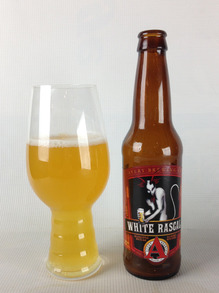 Avery White Rascal
Avery White Rascal
City: Boulder, CO
ABV: 5.6%
The verdict: This classic witbier from Avery may have been the spiciest thing on the table, in the most enjoyable possible way. Huge, pungent spice box aromas are the calling card, with tons of coriander and plenty of clove-like aromatics as well. It’s on the drier side, which in our minds pushes it further toward the “classical” end of the spectrum, supported by mild, grainy malt flavors. It’s an assertive wit where you can’t miss the spices involved, and should be appreciated by anyone who wants a high ceiling of flavor in their Belgian wit.
-thumb-220x258-575026.jpg) Cerebral Brewing BBA Here Be Monsters
Cerebral Brewing BBA Here Be Monsters
City: Denver, CO
ABV: 12%
The verdict: This is exactly the kind of classical barrel-aged imperial stout in terms of profile that could score well in just about any competition, and afterward drinkers would look at the label and say “Who is this? I figured this was Bourbon County Stout.” It’s just dead in the middle of the bullseye for what you’d expect to get if you saw “BBA stout” on a label. A big nose of whiskey fumes and charred oak suggests a stout redolent in booze, followed by enticing aromas of chocolate and toffee. Big and full-bodied, Here Be Monsters has the type of heft you’d expect from the name, with an assertive, whiskey-forward palette of flavors that is significantly better in execution than some of the other stouts with liquor-soaked profiles. Still, this is a stout for drinkers who like to leave no doubt that they’re drinking something that came out of a bourbon barrel. Big and bold, but comfortably familiar.
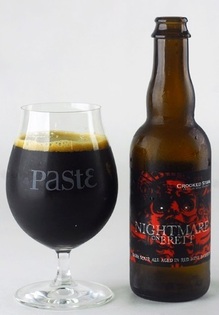 Crooked Stave Nightmare on Brett (red wine casks)
Crooked Stave Nightmare on Brett (red wine casks)
City: Denver, CO
ABV: 9.6%
The verdict: Woah—I don’t think any of the tasters saw this one coming. One of them seriously wrote “Jesus, this is a lot of flavor” on the score sheet. Crooked Stave has put its Nightmare on Brett, a “sour dark ale” that is pushing imperial stout territory, into a variety of different barrels in the past, but this red wine variant is really exceptional. The individual flavors in this profile just play so well together—you’ve got a significant nutty/toffee/roast presence in the base beer, while the souring agents bring out dark fruit flavors of plum, black cherry, raisin and dried fruits. And then there’s the barrel character—this Nightmare is intensely vinous, oaky and rich—one taster’s sheet describes it as “chunky,” which isn’t a bad word for a heavy, enveloping mouthfeel. This is like the 30-year-old tawny port of beers—a heady drinking experience, to be sure.
-thumb-220x328-157563.jpg) Crooked Stave Origins
Crooked Stave Origins
City: Denver, CO
ABV: 6.5%
The verdict: This beer essentially seems like a Flanders red that has gotten the oak barrel treatment along with a healthy dose of souring bacteria, and the result is a beer that has been transformed into a heady, complex experience. The wood comes through very strongly on this one—a bit too much for a few of the tasters, but highly praised by others. Strongly tart and full of ripe berry flavors, the wood gives it quite the assertive sour twang—coupled with the character of the underlying beer, you’d really think that these were red wine barrels rather than just plain oak. The final product is indeed winey, with a tannic dryness and leathery aromas to pair with the dark, dried fruitiness. If you like a very oaky cabernet sauvignon, then Origins might have a lot of the flavors you’re looking for.
 Crooked Stave Surette Provision Saison
Crooked Stave Surette Provision Saison
City: Denver, CO
ABV: 6.2%
The verdict: The bigger of two Crooked Stave saisons in the tasting, Surette may have been one of the funkiest things on the table. Yeast signatures and esters are extremely pronounced and complex—everything from “citrus” and “green apple” on score sheets to my personal favorite description, “buttery cookie.” Tartness is moderate, definitely making its lactic tang felt, as are flavors of oak, before the back end shows off some unexpectedly assertive grainy flavors that remind you this is still a rustic farmhouse ale you’re drinking. A nearly perfect example of an assertive, oak-treated saison.
 Crooked Stave Vielle Artisanal Saison
Crooked Stave Vielle Artisanal Saison
City: Denver, CO
ABV: 4.2%
The verdict: The little brother of the earlier Surette saison from Denver’s Crooked Stave, Vielle actually made an even bigger impression despite being 4.2% ABV. This moderately tart farmhouse ale punches way above its weight class in terms of flavor, with an intriguing collection of barnyard funk notes and sour fruit flavors—think green apple and lemon in particular. The tangy, acidic mouthfeel is refreshing but also gives it a feeling of weight and substance that would make you think it was several percentage points higher in ABV. The oak doesn’t show up in terms of “woody” flavors as much as it enhances the depth and bite of the fruity impressions to make a dangerously drinkable ale that straddles a border between saison and something like “American wild ale.”
 Dry Dock Brewing Co. Bligh’s Barleywine Ale
Dry Dock Brewing Co. Bligh’s Barleywine Ale
City: Aurora, CO
ABV: 10%
The verdict: We typically see a good degree of variation among the top 5 when we do these blind tastings, but when it came to barleywines, the tasters simply couldn’t deny how tasty the top tier of barrel-aged offerings became. That’s not to say there weren’t some lesser bourbon barrel barleywines here, but the next five were on another level. The Dry Dock offering is big, burly, syrupy and full-bodied, with butterscotch and vinous flavors that definitely evoked brandy as well as whiskey. A boozy after-dinner digestif of a beer and a sipper, with “the body of a pro wrestler,” according to one score sheet. Another sheet favorably compares its malt complexity to the classic JW Lees English barleywine. This is a good example of a barrel-aged beer that certain drinkers would find “too rich,” but others would go to any length to acquire. We’re in the second camp.
-thumb-220x360-575052.jpg) Epic Brewing Co. Big Bad Baptista
Epic Brewing Co. Big Bad Baptista
City: Salt Lake City, UT / Denver, CO
ABV: 12.2%
The verdict: Mexican mocha, straight up. That’s what Big Bad Baptista is, and it’s not pretending to be anything else. This is not beer aspiring toward some kind of subtle, artistic perfection; it’s a people pleaser, pure and simple. It reminds us of a barrel-aged version of Perennial Artisan Ale’s well-liked Abraxas stout, and what it has in common with that beer is how it takes a now-common set of complementary adjuncts (cinnamon, coffee, vanilla, cacao nibs) and simply uses them in a more harmonious way than some of the others. Residual sweetness is moderate, but stops short of being saccharine, and none of the tasters accused the beer of some note of artificiality, which is usually the factor that might bring such a flamboyantly flavored stout down a notch. It’s just a really awesome dessert beer, and likely on well suited to churro dunking. You don’t have to overanalyze it—where the other Baptists are symphonies, this one is a perfectly crafted power pop song.
 Epic Brewing Co. Double Barrel Big Bad Baptist
Epic Brewing Co. Double Barrel Big Bad Baptist
City: Salt Lake City, UT / Denver, CO
ABV: 12.8%
The verdict: The “double barrel” aspect of this beer is actually a reference to the coffee—like regular Big Bad Baptist, it’s aged in bourbon barrels, but in this beer the coffee beans were also bourbon barrel aged. For whatever reason, this seems to amplify the strength of the coffee note on the nose, surpassing even the already coffee-heavy original. It also strikes us as a bit sweeter and more viscous and syrupy than the original Baptist, again presumably due to the bourbon barrel-aged coffee beans. From one score sheet: “Thank you. Smoky, roasty, puts the stout in imperial stout.” As in the regular Baptist, the “whiskey” character is significantly more subtle than you find in a lot of these beers, hinting at nuances of oak, vanilla and toffee. Epic is very skilled with putting just the right touch of the barrel on these beers. Of the three Baptists (which all made the top 50!), this is our favorite—a more decadent version of the original that is a bit more complex than the very fun but more ostentatious Baptista. This stuff is just plain great.
 Fiction Beer Co. BBA Malice & Darkness
Fiction Beer Co. BBA Malice & Darkness
City: Denver, CO
ABV: 14%
The verdict: One of the ways it’s easy to know that Denver is a great beer city is the fact that in any given tasting, they usually have a few representatives in the ranked portion … but it’s often completely different breweries. Which is to say, seemingly any given Denver brewery is capable of making great beers that perform well in blind tastings, including the literary themed Fiction Beer Co., which I discovered the last time I visited the city in Sept. to profile several up-and-coming breweries. This inky stout is packed with roast and coffee on the nose, with the suggestion of sweetened espresso and deeply caramelized sugar. Dark chocolate is big on the palate, with a touch of smoke and a slightly vinous, winey element of dark fruit and oak. The degree of coffee character is particularly impressive, given that this stout doesn’t actually have a coffee addition as far as we can tell. Booze is impressively well hidden, especially for 14% ABV. This beer is packing a whole lot of character, but no element is ever out of balance.
 Funkwerks Raspberry Provincal
Funkwerks Raspberry Provincal
City: Fort Collins, CO
Style: American wild ale
ABV: 4.2%
The verdict: A light, zippy and surprisingly refreshing raspberry wild ale from Colorado farmhouse standouts Funkwerks, who have joined our tastings for the first time. Tartness is moderate, which is probably appropriate for the lower ABV, and the raspberry flavors are authentic and nicely integrated, with no impression of candy or syrupyness. A little bit of malt sneaks through as well, but this beer is for the most part an unassuming sour that provides some nice bang for its ABV via bright fruit flavors. Nicely dry and elegant. It would be interesting to see how this would have stacked up against some of the heavy-hitting raspberry beers in our recent sours ranking.
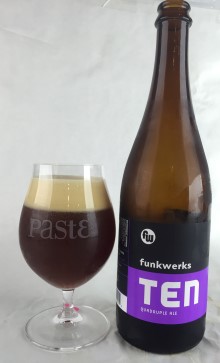
City: Fort Collins, CO
ABV: 10%
The verdict: Here’s another example of an American quad that tricked several tasters into thinking it was a bottle straight out of Belgium. It’s lighter in color than most, with an almost saison-like nose that emphasizes herbal and estery/fruity notes. On the palate, it’s quite balanced—the kind of beer that elicits notes like “not too much of anything” on score sheets, and that is indeed a compliment. Bready malt flavors intermingle with deeper, caramel/toffee sweetness and dark fruit/raisin flavors. Balance, complexity and drinkability all seem to be of equal importance in the concept.
-thumb-220x341-428656.jpg) Great Divide Fresh Hop Pale Ale
Great Divide Fresh Hop Pale Ale
City: Denver, CO
ABV: 6.1%
IBU: 55
The verdict: Given that this is a harvest beer, it was impossible to get it at peak freshness for a February pale ale tasting, but we weren’t about to leave it off the list when we saw it on the store shelf. And rightfully so, because it actually held up quite well. It’s always been a beer that boasts fascinating, unusual hop flavors each year, much less “citrus and fruit,” and much more grassy, spicy and herbal, with complex and exotic notes that remind one of thyme or sage—“dry and spicy, with a nice grassy bite,” wrote one taster. Balanced by toasty malt that almost seems English in character, it definitely stands out in a group of pale ales that are more about bright fruit flavors. A fascinating outlier.
-thumb-220x248-504382.jpg) Great Divide Brewing Co. Hoss Oktoberfest Lager
Great Divide Brewing Co. Hoss Oktoberfest Lager
City: Denver, CO
ABV: 6.2%
The verdict: This beer was once just referred to as a “rye lager” as a part of Great Divide’s year-round lineup, but now it’s being recognized for the style it really was the whole time as a seasonal: A märzen. Regardless it’s still some excellent stuff. The rye is unsurprisingly easier to perceive when the tasting isn’t completely blind, but it comes across as a sort of unusual earthiness more than with the predicted peppery spice of dark rye bread. More than that, we get a light, well-balanced caramel maltiness here, mildly sweet but still quite drinkable. Grainy flavors are present on the back end, in an oktoberfest that makes a pretty ideal example of the American approximation of the style. With a drying finish, it’s the kind of pint that’s liable to disappear much faster than you realize or intend. Not flashy, just solidly constructed.
-thumb-220x362-582164.jpg) Left Hand St. Vrain
Left Hand St. Vrain
City: Longmont, CO
ABV: 9%
The verdict: Now this definitely was a surprise. If you had asked me to guess where the top-ranking American tripel was going to come from, I probably would have volunteered Allagash, or Ommegang, or a brewery that specializes in abbey ales specifically. But nope—it’s milk stout mavens Left Hand that came out of left field with this great, severely underrated Belgian tripel. Bright and zippy, with prickling carbonation, it presents a very nice citrus note on the nose, followed by tons of bready, yeasty malt. “Smells like a tripel,” wrote one taster, noting the prominent banana ester and accompanying clovey spice. Like many of the tripels, this one is fruity on the palate, but it has a bit more dimension. The requisite banana is there, but there’s also a very nice stone fruit note, like peach or apricot, and more bready malt complexity. Easy drinking but flavorful, with imperceptible alcohol, this is just a beautifully constructed beer that should get much more attention. Apparently we should drink more Belgian styles from Left Hand?
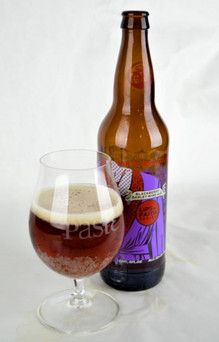 New Belgium Blackberry Barleywine
New Belgium Blackberry Barleywine
City: Fort Collins, CO
ABV: 10%
The verdict: It’s funny to think that if this were a wine-judging competition, a sommelier would tear a drink like this apart for being “jammy,” but move it to a barleywine tasting and suddenly that’s a much more desirable quality. New Belgium’s latest Lips of Faith release is an English barleywine treated with a copious shot of blackberry, which announces its presence immediately. Drinkers might not immediately perceive that it’s blackberry specifically (one taster thought it was more grapey), but the residual sweetness and fresh berry fruitiness are certainly there, enhanced by what may be a little bit of tartness. The crystal malt character unsurprisingly gets pushed back a little, to the extent that a blind taster might not peg this immediately as a barleywine, but it would be obvious as something high-gravity, rich and fruit-infused, which is close enough. This is quite clearly the fruit-lover’s take on barleywine.
-thumb-220x328-157532.jpg) New Belgium La Folie
New Belgium La Folie
City: Fort Collins, CO
ABV: 7%
The verdict: New Belgium’s Lips of Faith program has been one of the driving forces behind sour beers being put in the hands of craft beer drinkers nationwide. This is the country’s 4th largest craft brewery, trailing only Yuengling, Boston Beer Co. and Sierra Nevada. Of those, (no offense, BBC) New Belgium is clearly the one identified with sour beer, and as such they’ve helped play tastemaker and introduced countless new drinkers to various tart styles. La Folie is probably the best of their widely available offerings, a moderately tart, almost surprisingly traditional oud bruin that actually falls on the lighter-intensity side of the spectrum in this particular tasting (there’s a LOT of assertive beer on the table). Pleasant, cherry-like fruitiness, a kiss of oak and good balance are what one should expect to find. A fine introduction to the style of oud bruin from a huge American craft brewery that can still make beer like a tiny farmhouse brewer in the middle of nowhere.
-thumb-220x328-582142.jpg) New Belgium Trippel
New Belgium Trippel
City: Fort Collins, CO
ABV: 8.5%
The verdict: This beer was almost certainly the first tripel consumed by many fledgling craft beer drinkers in the ‘90s and 2000s, and that alone probably makes it one of the most important American tripels ever made. New Belgium caught a lot of flak in 2015 when they announced they were updating the recipes of both their Abbey Ale and Trippel, but our own tasting of the two side by side at the time told us one thing: The new version was superior. This blind-tasting is only more confirmation—this is one of the best values you can get in Belgian beer, and one of the only excellent abbey-style beers you can routinely find in a gas station. Creamy in terms of mouthfeel, it presents big, dark fruity alcohol flavors, citrus and tons of spice—coriander, anise and even a touch of something that reminded one taster of cumin. There’s more going on in this beer than meets the eye.
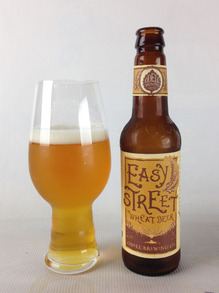 Odell Brewing Co. Easy Street Wheat
Odell Brewing Co. Easy Street Wheat
City: Fort Collins, CO
ABV: 4.6%
The verdict: Breweries like to use wheat beers as canvases of sorts—a blank slate to treat with fruit, spices and other flavors, but let’s not forget that a perfectly made American pale wheat can also be a thing of beauty. Of every beer in our tasting, Odell’s example was the most perfect encapsulation of malted wheat itself, and the deliciously creamy texture it imparts. Not lacking in flavor by any means, it’s a very grainy, doughy, bready beer—like a liquid loaf of fresh-baked wheat bread. This style of beer really benefits from perfectly controlled, neutral fermentation, and that’s what you get here—a super clean, crisp American wheat beer that highlights the best aspects of the malt.
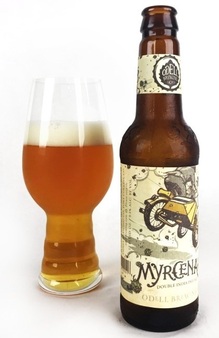 Odell Brewing Co. Myrcenary DIPA
Odell Brewing Co. Myrcenary DIPA
City: Fort Collins, CO
ABV: 9.3%
The verdict: What a beautiful, classic, fragrant DIPA this standby from Odell proved to be. An aromatically complex, intriguing nose draws you in with citrus, floral and spicy qualities, which lead into lemon and grassy hop flavors. It’s hop-forward, but with just enough malt to not go right out and label it as some kind of hop bomb. Malt comes forward with very light caramel and pleasant biscuit/breadiness that makes for a nice change of pace compared to some of the more intensely malty beers on the table. Very clean and crisp in its presentation, especially when considering the 9.3% ABV, Myrcenary feels and tastes like a beer made by a brewery that has perfected their system and their craft down to the most exact, nuanced level—one gets the sense that the final product is exactly what was intended. And that sounds like a pretty accurate description of Odell to us.
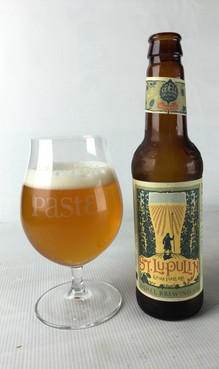 Odell Brewing Co. St. Lupulin
Odell Brewing Co. St. Lupulin
City: Fort Collins, CO
ABV: 6.5%
The verdict: It’s hard to believe that this “extra pale ale” from Odell isn’t a year-rounder, given how perfectly balanced and put together it is. Heavy on the floral aromatics, it also has a uniquely earthy tone and bitterness that’s near the top range of what you’ll ever find in an American pale ale—in reality, this one is certainly straddling the boundaries between APA and IPA. Still, despite that, it remains sessionable, that kind of thing you could imagine putting away in quantity at the perfect summer BBQ. It leans toward the hops, yes, as the name would certainly imply, but there’s just enough biscuity malt as well to give it some semblance of balance.
-thumb-220x307-428626.jpg) Oskar Blues Dale’s Pale Ale
Oskar Blues Dale’s Pale Ale
City: Lyons, CO
ABV: 6.5%
IBU: 65
The verdict: Everyone knows that Dale’s is a classic of this genre, and one that has been responsible for the craft beer conversions of lord only knows how many Coloradans over the years—even if its statistics seem to clearly make that case that this is an IPA and not a “pale ale.” In a blind tasting setting, it feels like an old-school recipe—plenty of balancing malt and caramel/toffee flavors despite the hop bill, and hop flavors that zero in on grapefruit and pine in particular. They aren’t aromatics or flavors that jump out of the glass at you when comparing it to a blind lineup of pale ales in 2016, but it definitely earns points for balance and composition—unsurprising, given that Oskar Blues has no doubt been zeroing in on the perfect Dale’s recipe for years now. After the reveal, we were actually quite impressed with how well it hid that 6.5% ABV. What else can you say? It remains a beloved beer, and a critically important one to the history of pale ale and canned American craft brews.
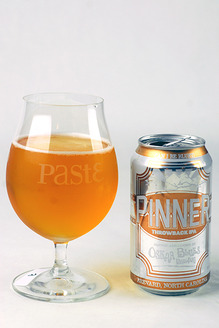 Oskar Blues Pinner
Oskar Blues Pinner
City: Lyons, CO
Style: Session IPA
ABV: 4.9%
The verdict: The aroma of Oskar Blues’ session IPA presents with a hint of crisp malt and classical West Coast hop notes: Citrus, pine and resinous, dank, green grassiness. It’s very much the aroma one might envision when someone says “session IPA from Oskar Blues.” The flavor, meanwhile, presents a distinctly sweet clementine or tangerine quality, chased by more of those resinous green flavors. It’s definitely noticeable as being lighter of body than something like Dale’s Pale Ale, moderately bitter but very drinkable. It’s certainly among the other best-in-class session IPAs, especially when you get it fresh.
-thumb-220x284-554603.jpg) Oskar Blues Ten FIDY
Oskar Blues Ten FIDY
City: Lyons, CO
ABV: 10.5%
The verdict: Good old Ten FIDY—it’s as dependably great an imperial stout as there is on the market, and we like it every time we taste it. In terms of flavor profile it’s really rather similar to the beer that precedes it, as both are excellent examples of how American brewers took “Russian imperial stout” and defined it for the modern craft beer palate. Big and thick of body, it’s a little less distinctly roasty than the preceding Serpent’s Stout, and instead just a bit more in balance with its fruity and lighter roast notes—think light roasted coffee, roasted nuts and perhaps a bit of toffee as well, with a small dose of hop-derived bitterness. It’s an excellent beer to use as a measuring stick or definition for the style in a competition or blind tasting setting, because it checks all of the different boxes: Roast, fruit, caramelization, hops. We look forward to seeing how multiple barrel aged versions of this beer do in next month’s blind tasting of barrel aged stouts.
-thumb-220x271-575060.jpg) Oskar Blues Rum Barrel Ten FIDY
Oskar Blues Rum Barrel Ten FIDY
City: Lyons, CO
ABV: 14.2%
The verdict: I was legitimately shocked, moments before I started writing this entry, to look up the ABV of this beer and find that it’s a massive 14.2%. It’s safe to say that the booze of Rum Barrel Ten FIDY is hidden ridiculously well; this is incredibly potent and dangerous stuff. Perhaps that’s partially because this beer leans more on the underlying stout than it does the flavor profile of the rum barrel, but either way, it’s quite the achievement. Thick, positively chewy maltiness and a big charge of roast (which is a signature to every version of Ten FIDY) are supported by bittersweet cocoa and a hint of baking spices and light coconut/toasted marshmallow. To quote one score sheet: “Earthy and oaky, with surprising depth.” Positively luxurious in terms of mouthfeel, you could tell even if you didn’t have taste buds that this was a huge, full-bodied beer. Regular Ten FIDY is a classic of this genre that still holds up very well, but the barrel-aged versions take it to an entirely new level.
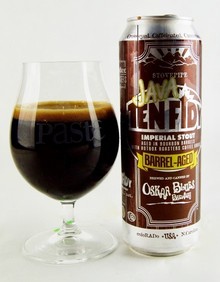 Oskar Blues Java BBA Ten FIDY
Oskar Blues Java BBA Ten FIDY
City: Lyons, CO
ABV: 10.5%
The verdict: There was a discussion we often had during these tastings—just because you put a beer in a barrel, that shouldn’t automatically give it “bonus points” and increase its rating, as seems to happen on any app such as Untappd. The same is true of adding an adjunct like coffee; it doesn’t always make the base beer objectively better … except when it does. And it does here, because the “Java” version of BBA Ten FIDY is absolutely delectable. It actually doesn’t go overboard with the coffee, and the addition is probably a bit more subtle than some drinkers would like or expect. But the thing is, Ten FIDY is already such a roast-driven imperial stout that the coffee addition marries beautifully to the existing roast profile and simply makes it more complex and interesting. Coffee melds with booze to create a sweet, Kahlua-like profile, but there’s also quite a lot of dark fruitiness in this stout as well. From one score sheet: “Deep, roasty coffee, and chocolate raspberry.” Moderately sweet, it both packs a wallop in terms of volume of flavor and is wonderfully complex. We wish this beer was available year round.
 River North BBA Nightmare Fuel
River North BBA Nightmare Fuel
City: Denver, CO
ABV: 14.8%
The verdict: Here’s a perfect illustration of the way a whiskey barrel can transform the overall flavor profile of a beer. When we tasted the non-barrel-aged version of this beer last month, we were both intrigued and overwhelmed by the utterly massive charge of coffee in it—Nightmare Fuel was an easy winner for “most coffee flavor,” but it was just too much to jibe with everything else going on in this 14.8% ABV imperial stout. Put that beer in a barrel, though, and everything just gets smoothed out, so to speak. The richness of bourbon, vanilla, toffee and drying quality of oak now work as a counterbalance to the still impressive coffee. At the same time, the new balancing act allows more distinct notes to come forward: Bittersweet baker’s chocolate, dark fruitiness and moderate booze. The fact that we say “moderate” when it’s a 14.8% ABV beer is also impressive in its own right. River North’s Mr. Sandman was our #1 beer in the non-barrel imperial stout tasting, and with the BA version of Nightmare Fuel they’ve found their way into the top 20 of an even larger, tougher field. Stands to reason that these guys know their stouts.
 River North Brewery Mr. Sandman
River North Brewery Mr. Sandman
City: Denver, CO
ABV: 13.5%
The verdict: Way back in the summer of 2014, I visited a young brewery in Denver called River North while spending five days drinking my way up and down the breweries of the front range. Although they’re now housed in a different building, I noted then that they could make a good stout. Now, they’ve made our #1 non-barrel aged imperial stout. River North sent in no fewer than four stouts for this tasting, all of which were interesting in some way. Mr. Sandman is the closest to a “standard” imperial stout, being the same base beer used in their coffee variant, Nightmare Fuel. The latter was also included, and proved divisive in the blind tasting because there was just so much coffee in it. In a tasting of 102 imperial stouts, River North undoubtedly, easily, without question made the beer with the most insane amount of coffee character, and that beer still didn’t make the top 40 because frankly, some of the tasters just couldn’t deal with such an overwhelming surge of java. The version without coffee, though, was a revelation—one of those rare beers that comes along and no one at the table has anything negative to say about it. It excels not by being specifically unique but by assembling a pitch-perfect composite of all the flavors you want in a big, motor oil imperial stout. Dark fruit flavors of raspberry and cherry intermingle gently with dark, bittersweet baker’s chocolate. Sturdy roast provides a drying counterpart to molasses-like caramelization. Booze—there’s definitely booze, no doubt about that. And like so many of the other great stouts, the x-factor is textural, as Mr. Sandman perfectly balances a decadently creamy mouthfeel with surprising, dangerous drinkability. You could nurse one of these all night, or you could just as likely consume it all too quickly. That’s what being a great imperial stout is all about.
 Ska Brewing Co. Rudie
Ska Brewing Co. Rudie
City: Durango, CO
Style: Session IPA
ABV: 4.5%
The verdict: There’s a lot going on in this fairly new session IPA from Durango’s Ska, thanks to a blend of trendy American and Australian hops—El Dorado and Galaxy, prominently. Citrus pops prominently, but there’s also a bit more caramel sweetness and a creamy texture that combines with orange-forward hop flavors to remind one of candied orange—or a Dreamsicle? But it doesn’t end there, with a melange of tropical fruits as well, from melon to passionfruit. Interesting stuff, and a worthy younger brother to Ska’s excellent Modus Hoperandi.
-thumb-220x259-491993.jpg) Station 26 Brewing Co. Juicy Banger
Station 26 Brewing Co. Juicy Banger
City: Denver, CO
ABV: 7.5%
The verdict: You can be certain that there was a smattering of jokes at the table about another brewery making an IPA with “banger” in the title after The Alchemist previously unleashed Focal Banger on the world, but this young Denver brewery proved multiple times within this tasting that they’re a force to be reckoned with as well. This particular IPA, which has already become a local Denver favorite, is a pretty burly example at 7.5% and 100-plus IBU. With no shortage of toasty malt sweetness for balance, it almost comes off as a slightly miniaturized DIPA, albeit one that doesn’t skimp on the hops, either. Hop character comes through with a nice, pronounced stone fruit wave and very ripe, sweet tropical notes—like caramelized pineapple chunks, or fruit in heavy syrup. It’s a rich, fairly bracing American IPA that seems pretty pleased with its own decadence. We are, too.
-thumb-220x270-492045.jpg) Station 26 Brewing Co. Space Wrangler
Station 26 Brewing Co. Space Wrangler
City: Denver, CO
ABV: 7.3%
The verdict: Station 26 is clearly doing some things right in the Denver beer scene these days, giving us a second IPA that ended up in the finals. This is a massive beer, with a big, sweet, tropically charged nose redolent of mango and also apricot-like stone fruit. It’s a viscous, almost syrupy beer with no shortage of sweetness backing those juicy hop flavors—an almost honeyed quality that is hard to resist, but with enough bitterness to balance things out on the back end. It’s certainly indicative of some of the trends that are currently popular in IPA, but it avoids the saccharine or artificial pitfalls that some examples are falling into at the same time. It will be interesting to see how ultra-expressive IPAs in this vein compete against venerable, classic examples in a city such as Denver, which has been a craft bastion for such a long time.
-thumb-220x280-540055.jpg) Upslope Christmas Ale
Upslope Christmas Ale
City: Boulder, CO
ABV: 8.3%
The verdict: This is an American Christmas beer that I think tends to fly under the radar, but it’s also one that has performed well in previous Paste tastings, so I wasn’t surprised to see it score highly again. It’s a nuanced, more subtle take on Belgian dark strong ale than almost all the other offerings, either from Belgium or the U.S.A. With a slightly lower ABV, Upslope’s Christmas Ale offers many of the same elements of flavor you find in the classic Belgians, plus superb balance, with a lower threshold of assertiveness—i.e., it’s less likely to put you on your ass after a single beer. Fairly significant residual sweetness and dried fruitiness is tempered by a heavy dose of baking spices and classic Belgian abbey ale esters. It reminds me of nothing so much as a lighter version of Saint Bernardus, and what better compliment can you possibly pay to a Belgian Christmas ale than that?
-thumb-220x271-492067.jpg) WeldWerks Brewing Co. Juicy Bits
WeldWerks Brewing Co. Juicy Bits
City: Greeley, CO
ABV: 6.5%
The verdict: Well, there you have it—definitive proof that great NE IPAs aren’t only coming from New England these days. It’s probably safe to say that this hazy, juicy, orangey brew is the biggest surprise of the top 10, or at least the most unheralded. WeldWerks, however, is for real—they picked up multiple medals in the last year at both the 2015 GABF and 2016 World Beer Cup, and they also took IPA gold in the Denver International Beer Competition in 2015. Juicy Bits is their self-described northeastern beer, and it announces itself with a big, impressive tropical fruity nose that slowly morphs into intense orange juice citrus as the beer warms a bit. It’s definitely on the sweeter side, with the residual sugar conferring the expected chewy mouthfeel. It’s a beer that the name describes perfectly, the kind of IPA that detractors would likely call “one note” while ignoring how perfect and crowd-pleasing that note is. To quote one tasting sheet: “Super citrusy, but just dry enough.” That is the difficult task that most of these NE IPAs need to figure out—how to be decadent without being absurd. This one pulls it off.
-thumb-220x290-554656.jpg) WeldWerks Brewing Co. Mocha Achromatic
WeldWerks Brewing Co. Mocha Achromatic
City: Greeley, CO
ABV: 9.5%
The verdict: Here’s the thing about coffee stouts: There’s definitely such a thing as “too much coffee.” We know this to be true, and we experienced it a couple of times in this tasting—ridiculously roasty, obscene amounts of coffee that just totally overpowered several beers that otherwise could have been really interesting. Mocha Achromatic from WeldWerks comes dangerously close to that threshold, but stops just before it gets there—it’s the biggest pure amount of coffee flavor present in any of the beers to make the ranked portion of this list, and it’s not really close. So in other words: You better love coffee and roast, if you’re seeking this one out. Smoky, oily and exploding out of the glass with espresso-like aromatics, it backs up the coffee with dark, bittersweet chocolate and subtle hints of currant-like dark fruit, but you’re always going to be inexorably drawn back to the bean. How caffeinated is this beer, we wonder? It should be served in cafes out of tiny espresso cups, served with a dab of whipped cream.
-thumb-220x273-554401.jpg) WeldWerks Brewing Co. Peppermint Mocha Achromatic
WeldWerks Brewing Co. Peppermint Mocha Achromatic
City: Greeley, CO
ABV: 9.5%
The verdict: WeldWerks, who made the top 10 of our 247 IPA blind tasting with their fantastic (and well-named) Juicy Bits, sought to stack the deck in this stout tasting by sending us no fewer than FIVE different beers, all of which were distinct enough to qualify. This “peppermint mocha” offering is easily the most unorthodox, but so help us, it just works. We’ve had a few mint chocolate beers before, but none of them have succeeded in so accurately capturing the heart and soul of a Girl Scout Thin Mint cookie as this one. The chocolate is pleasant without being overbearing or cloying, and the peppermint is unmistakeable but not obnoxious. This is not a style of beer that is ever going to win a huge blind tasting of imperial stouts, if only because it’s so obviously a flavor experiment, but this is just about the best possible version of “mint stout” that we can imagine. You gotta give them some credit for that.
Jim Vorel is Paste’s resident beer guru. You can follow him on Twitter for more beer content.